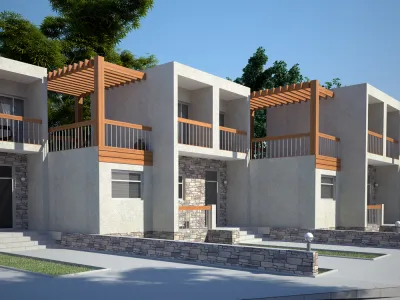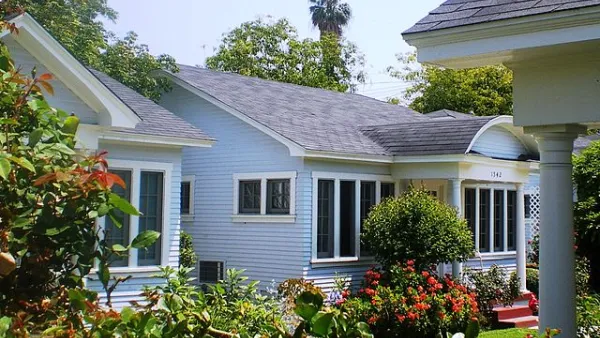A recent article explains how, and why, small lot subdivisions get built in Los Angeles. Also, the city has recently updated a procedural glitch to make permitting easier for small lot projects.

Will Macht examines the growing practice of small lot development, by first explaining its popularity with developers: "The Great Recession halted the building boom, leaving many developers and architects averse to large-scale projects with greater financial risk and exposure to long-term construction liability. In response to these factors, as well as changing market preferences, some developers are now experimenting with small- and intermediate-scale projects to increase density in a shorter time frame and at lower risk."
Designers love the small lot typology as well: "At the same time, most architecture firms no longer design single-family houses except for very wealthy clients. Some firms are experimenting with designing single-family homes at intermediate densities that enable them to spread their fees over more projects than when they work on one-off, high-design, custom-built houses."
The article continues into great detail about a case study of small lot development in Los Angeles, and to make the case for the flexibility offered by "fee-simple" lots.
On a related note, the Los Angeles Department of City Planning announced an improvement to the permitting process for small lot projects. Here's how an emailed statement explains the update, with will take effect on September 16, 2014:
"Previously, a glitch in City regulations required developers with approved plans to either wait upwards of two years for final maps to record or file for code deviations in order to receive building permits. This inefficiency cost developers and the Planning Department valuable time and left neighborhoods with delayed projects and confusing project descriptions."
"The [approved] code amendment will immediately relieve 59 code-compliant projects of the need to file for deviations or wait lengthy periods of time before beginning construction. Simultaneously, the Department will have more time to focus on the project, rather than processing additional requests."
FULL STORY: Fee-Simple Small Lots Yield Urbane Density

Analysis: Cybertruck Fatality Rate Far Exceeds That of Ford Pinto
The Tesla Cybertruck was recalled seven times last year.

National Parks Layoffs Will Cause Communities to Lose Billions
Thousands of essential park workers were laid off this week, just before the busy spring break season.

Retro-silient?: America’s First “Eco-burb,” The Woodlands Turns 50
A master-planned community north of Houston offers lessons on green infrastructure and resilient design, but falls short of its founder’s lofty affordability and walkability goals.

Test News Post 1
This is a summary

Analysis: Cybertruck Fatality Rate Far Exceeds That of Ford Pinto
The Tesla Cybertruck was recalled seven times last year.

Test News Headline 46
Test for the image on the front page.
Urban Design for Planners 1: Software Tools
This six-course series explores essential urban design concepts using open source software and equips planners with the tools they need to participate fully in the urban design process.
Planning for Universal Design
Learn the tools for implementing Universal Design in planning regulations.
EMC Planning Group, Inc.
Planetizen
Planetizen
Mpact (formerly Rail~Volution)
Great Falls Development Authority, Inc.
HUDs Office of Policy Development and Research
NYU Wagner Graduate School of Public Service



























